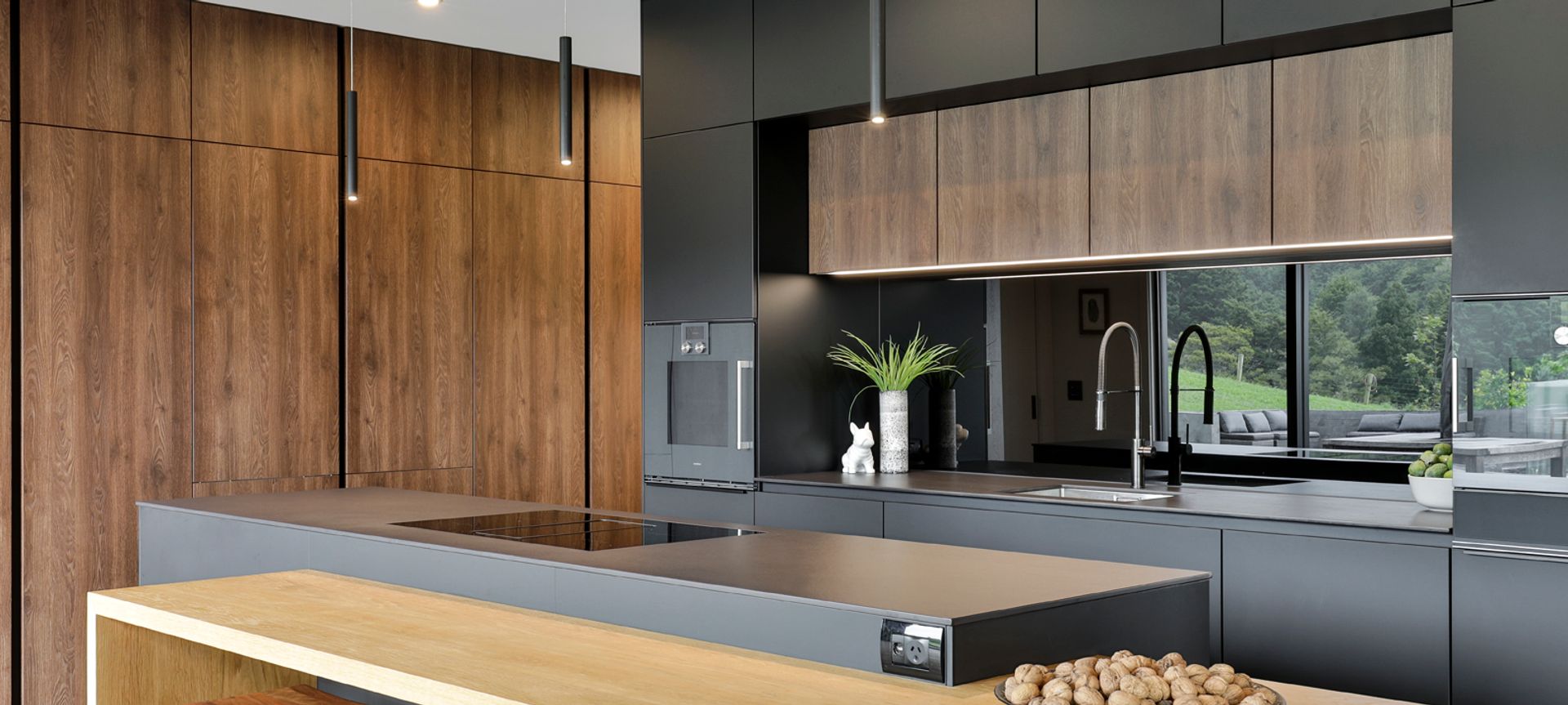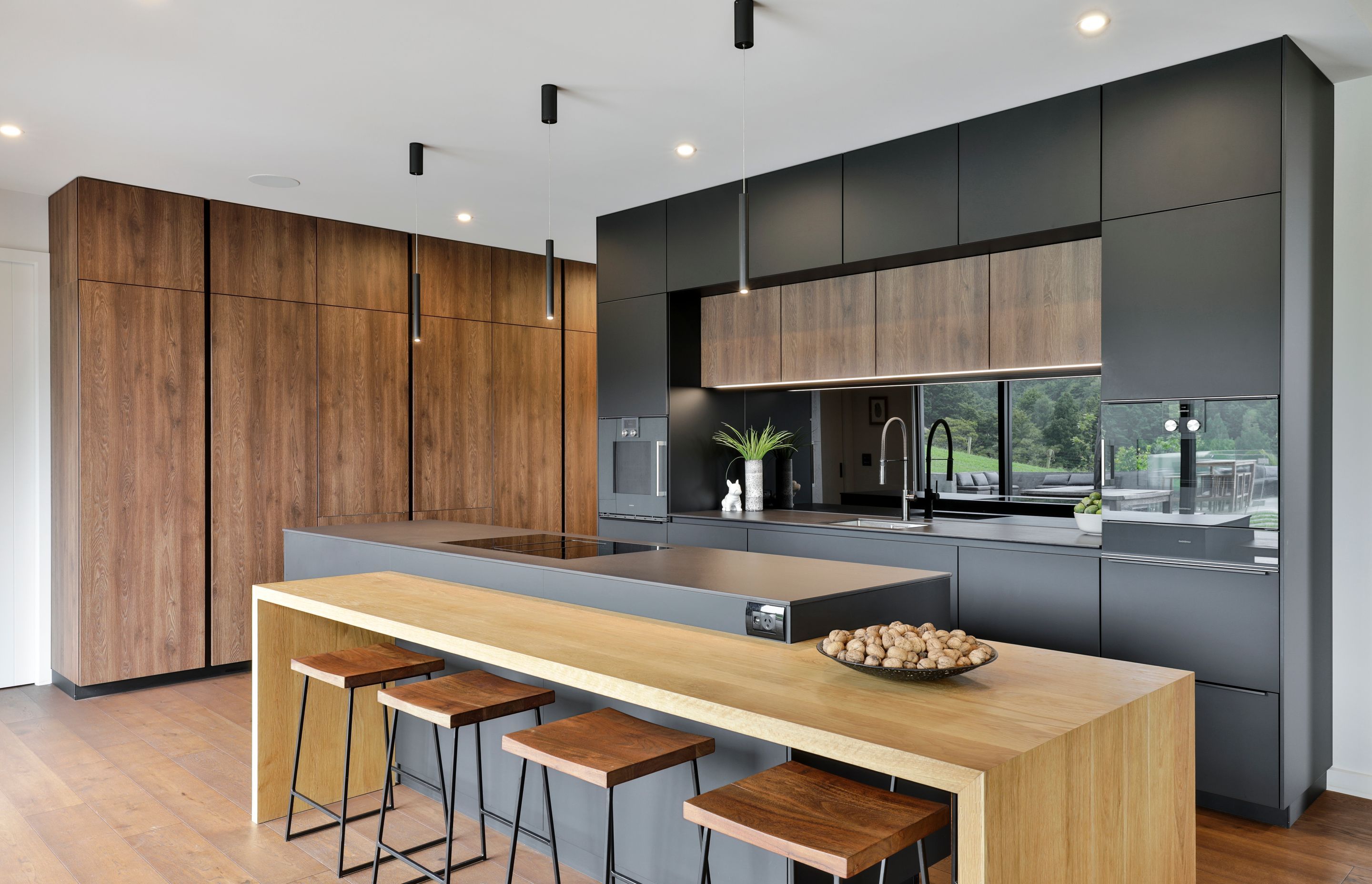Integrating the future
Written by
09 August 2021
•
3 min read

Handles have been disappearing from the face of the modern kitchen for a while, and now it seems appliances will be the next thing to go. That doesn’t mean we’ll revert to pre-oven days or doing the dishes manually. It just means that our mod-cons will be less visible in the kitchen.
An integrated kitchen is one that minimises the visual appearance of appliances, tucking them behind doors or into sculleries so that the overall effect of the kitchen is sleek, clean and tidy, Lara Farmilo, design manager at Poggenpohl explains. With the clutter gone, they feel more spacious, which allows them to function, not just as a place to cook, but as a living space where you want to spend time. Being more spacious and multi-functional is particularly useful, especially these days when space in the home comes at a premium.
Poggenpohl is passionate about creating kitchens that are also places to talk, eat, or even use as work spaces—and integration goes a long way to make that possible.
They have the process of integration down pat, working with top appliance brands to downplay the appearance of dishwashers, fridges and rangehoods. Even the lighting is tucked under cabinets and recessed into the ceiling. They also make use of hidden Evoline Power Ports to provide power and USB charging for devices, without disrupting the sleek look.
The exception is, of course, ovens, which by virtue of their function, have to be uncovered. Instead, Poggenpohl rely on their partnership with the appliance brands, such as Gaggenau, to make sure they have an oven with an elegant, muted visual design that fits in with the clean lines of the kitchen.

Poggenpohl: long lasting quality appliances
It’s not just about appearances though. When looking for appliance brands to work with, Lara says, it’s important that the appliances they select have the longevity to last with the kitchen that was made with their exact size in mind. So Poggenpohl chooses brands that make quality appliances. The market appeal of those brands goes hand in hand with quality.
“Integrating appliances results in clean, seamless kitchen design, which puts the focus on surfaces,” says Lara. Keeping appliances away from little fingers allows the chef to work easily without the appliances that they aren’t using getting in the way.
The team at Poggenpohl still do non-integrated kitchens too, but when given carte blanche to design a new kitchen, they always opt for integration.

Integrated kitchens: a harmonious combination of materials
It’s a simple concept, but Lara emphasises that a lot of work goes into making a kitchen look so seamless and achieving a balance is key. They use integration in tandem with warm, welcoming surfaces, like matte lacquer, timber and brushed stainless steel. The harmonious combination of materials and surfaces in the design results in kitchens that are both beautiful and functional.
Poggenpohl has adopted integration into its core values. It was a pioneer of the movement back in the 1950s! The concept makes sense alongside the company’s mission to ‘perfect the kitchen’ by incorporating them into comfortable living spaces. In New Zealand, they have designed hundreds of integrated kitchens and they say, this is the way of the future.
Learn more about how you can achieve integration of your new kitchen, creating a seamless living space.